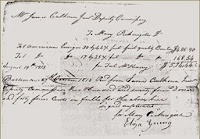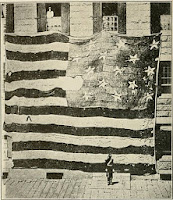Worth used to refer to personal wealth, as in: “
How much money do you have?”
It consisted of items like, money in the bank or under the mattress, cars or trucks, land and homes, stocks and bonds, livestock and crops, valuables (like Picasso paintings) and other physical items called “tangible assets”.
Wealth is the abundance of valuable resources or material possessions.
Tangible property in law is, literally, anything which can be touched, and includes both real property and personal property (or moveable property).
Today, there is a newer meaning of worth, as in: “
How much money can internet corporations make off of your data?”
This wealth is often cited to be divided into compartments that have an ascending scale rising in value based on how detailed the information is. Your phone number may not be that valuable as it's available to anyone using one of the internet phone directories while knowing that you are interested in buying a car, especially an expensive one, has more direct value.
Internet companies like Google and other search engines, internet stores like Amazon and on line shops for brick and mortar stores like Lowe's or Sears, use the history of your searches to derive “intent to purchase”. If you look up Porsche cars with red color that has a different value than looking up the different laundry uses for baking soda.
Intention is an agent's specific purpose in performing an action or series of actions, the end or goal that is aimed at.
Looking up specific items like stainless steel BBQs and spending time checking out the $1,000+ models has different value than if you are looking up the lower end of the price range. Time spent looking and repeatedly looking at the same items, show a greater intent and therefore are more valuable.
This data and the intention to buy, has “value” to those that collect it, sort it and separate the details and then resell these bundles of data it to other company's marketing and sales departments. Data that is collected “anonymously” is then “de-anonymized” with vigor, to identify you in real life and your physical location. This is all much easier to do than it sounds, because over time they can build very detailed profiles of your life style, your habits and your preferences and once they get one piece of the puzzle, the other pieces fall into place quickly. The old proverb: “
The apple doesn't fall far from the tree” describes how easy it is to unravel even the most intimate secrets of your life.
De-anonymization is a strategy in data mining in which anonymous data is cross-referenced with other sources of data to re-identify the anonymous data source.
This is what drives “targeted advertising” and it's worth a lot of money to the internet companies and the buyers of the data. They know before you do what you are going to buy, when and where. They know your price preferences and your social status as well as your banking status. They know your favorite color and they know what types of things you like because they know what you choose to look at. They know what you do not like by reversing the logic. We even make it easier for them to know for certain by clicking the
LIKE button where ever it appears.
Even some news media now use “targeted” news to sell you the news you want to hear. If you like FOX style news, you will get more of it. If you prefer PBS style interaction you will get that. If you have children's shows on, you won't get any news at all but there's sure to be a children's toy ad coming to your in-box very shortly.
To you, the cost is the loss of your privacy, for which you are given a 'non tangible token' in exchange called a "
cookie", that will continue to track your activities for the benefit of these companies.
However, in all of this we are told the basic data has little direct value and that it's the smallest of details which generates the worth.
Your privacy has a value. … The basic facts? Very little. More detailed information – for example, you own a smartphone, are trying to lose weight or planning a baby – are worth much more. Big life changes – marriage, moving home, divorce – bring with them fundamental changes in our buying patterns as we seek, through the brands with which we associate ourselves, to recast the narratives of our lives.
The death of privacy
Alex Preston The Observer, Sunday 3 August 2014 guardian.com
But there is another way to determine what your privacy is worth, and that is by looking at what the internet companies make from your information. No matter what “service” they offer, their real business is “selling your data”. The offers of “free e-mail” is not the service they are providing to you, it's the means by which they capture your contacts list and the content of your email messages. “Free social media” connections with friends and friends of friends is not the service they are providing, it's method by which they can capture more details about you, who you know and what you know about them and more important, any information you know about them via “
social media blabbing and gossiping” that they would not reveal themselves.
The value derived isn't just from a one time sale of the information, it's resold over and over and over. It's augmented and re-identified and re-parsed and reused. It grows in value over time as more in known to them about you. Your value to them grows and fuels their corporations and pays the employees who do the dirty work of ferreting out who you are and figuring out if they can entice you enough to buy just one more service that reveals one more detail about you, your family and your friends.
In the old days we had actual mailing lists and got loads of physical junk mail and you could track which magazine sold your name and address by inserting small typos or other changes when you subscribed. So, the idea of reselling your information is an old one but today value is far greater than we've been led to believe, because the value augments over time and the decay rate of the information is nearly nil. With the vast amounts of computing resources and cross-referencing done, the information never decays, your data is always up to date and ready to go to the highest bidder.
So what are you worth?
Your worth is the value of the corporations that trade on your information.
It's an easy calculation: Total Revenue divided by Total Customers. This number yields what you are worth to each company; today and tomorrow and the next year and the years far into the future, even beyond death.
Total Revenue ÷ Number of Customers = Your Value
You don't even have to mess with any numbers below the Revenue line because those other numbers represent how much they are willing to spend to get your data.
You can do this calculation for nearly every company on the planet today as each company will pay handsomely for the information. The Big Internet companies hold the lion share of the value and you can start adding it up from there. Toss in some of the smaller specialty companies that you may deal with and get a rough idea about what you are worth.
Next start adding in all those companies you do not deal with or buy from. Those companies that you do not do business with, will pay more for your data because they want you to “
join the club”. They will send those ad-enticements to your cell phone every time you go near their product aisles in the grocery, hoping to snag you into trying their latest marketing efforts with bright colors and bold designs and the “
new and improved” slogan on the box. They know if you stopped to look (WIN), if you picked it up (WINx2), if you put it in your basket (WINx3) and if you made it to the checkout stand (WINx4). If you changed your mind at (WINx3), they know they have a VERY GOOD chance at getting you to (WINx4) on your next visit. Perhaps a slightly better coupon (2 for 1) or discount (25% off if you by 3) or even (Buy 2 Get 1 free).
It's all designed to part you from your “worth”.
| Total Revenues for 2013 1 |
| Apple |
171 Billion |
| AT&T |
129 Billion |
| Verizon |
121 Billion |
| Microsoft |
78 Billion |
| Google |
60 Billion |
| Facebook |
8 Billion |
| Yahoo |
4.7 Billion |
| Netflix |
4 Billion |
1 Revenues as listed on Wikipedia. Data harvested, cross referenced and de-anonymized from individual corporate
SEC EDGAR filings.


